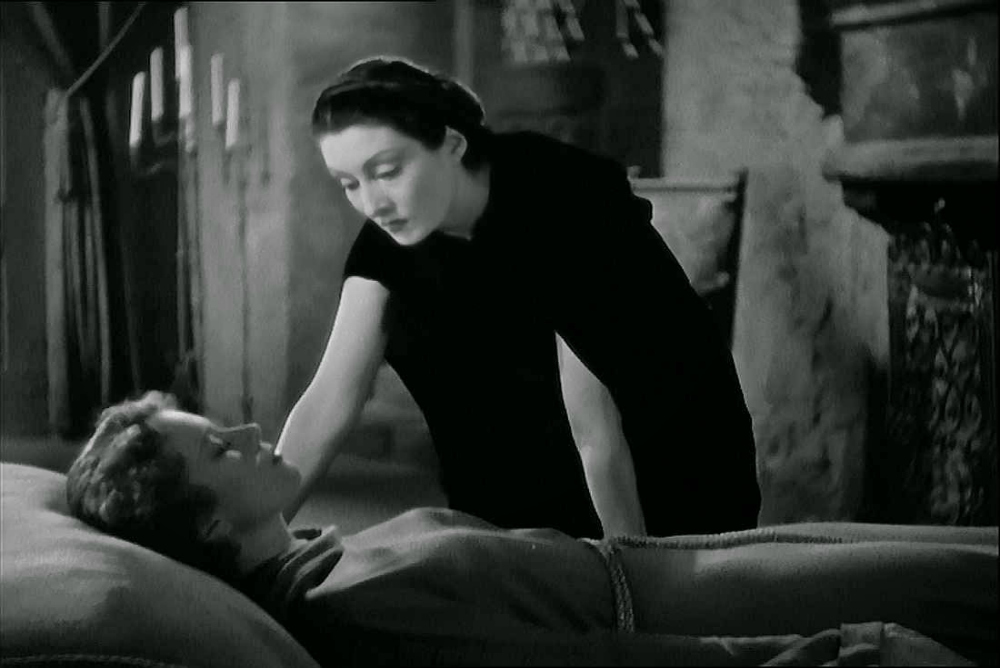Dracula’s Daughter (reviewed by Lisa Marie Bowman)
Did you know that Dracula had a daughter!?
Well, Bram Stoker might disagree but, according to Universal Studios, he did. Her name was Countess Marya Zaleska and, as played by Gloria Holden, she is the title character in 1936’s Dracula’s Daughter! Like her father, the Countess was also a vampire. The film never gets into just how she became a vampire. Was she born a vampire or, far more disturbingly, was she once a mortal who turned into a vampire by her own father? The film doesn’t tell us but it does establish early on that she hates being one of the undead. Unlike her father, she struggles with her urge to drink blood. When she discovers that Dracula has been staked, she and her servant, Sandor (Irving Pichel), steal the body from the morgue and burn it. The Countess thinks that this will cure her of her urges.
Sadly, it does no such thing.
So, what’s a reluctant, 20th century vampire to do? Well, she can always go to a psychiatrist and hope that science can somehow break the curse. She ends up as a patient of Dr. Jeffrey Garth (Otto Kruger). By coincidence, Dr. Garth has another famous patient — Dr. Edward Von Helsing. (That’s right, they changed the “van” to a “von” in Dracula’s Daughter. Despite the name change, Edward van Sloan returns to play the veteran vampire hunter.)
Von Helsing in on trial, accused of murdering Dracula in the previous film. Oddly enough, nobody mentions Renfield who, seeing as how we’re told Dracula’s Daughter starts exactly where Dracula left off, would have been found dead in the crypt as well. Even stranger, no one steps forward to defend Von Helsing. Dr. Seward, Mina, Johnathan Harker? Forget about them. Not a single one is to be found while Von Helsing is accused of murder.
Bastards.
Fortunately, Von Helsing has a defense! Since Dracula was already dead and had been for 500 years, Von Helsing could not have killed him. Helping him out with this defense is Dr. Garth…
Meanwhile, the Countess tries to resist the urge to attack every woman that she sees. She pours her frustrations out into painting. One night, Sandor brings the Countess a new model, a beautiful young woman named Lil (Nan Grey). The Countess orders Lil to undress and then, after staring at her, gives into her urges and attacks…
If you’re thinking that there’s a subtext here, that’s because there is. (In fact, Universal’s tagline for the film was, “Save the women of London from Dracula’s Daughter!”) Perhaps even more so than in Dracula, Dracula’s Daughter uses vampirism as a metaphor for forbidden sex. When the Countess stares at Lil and, later, when she prepares to bite the neck of Dr. Garth’s fiancée, she is embodying the hysterical fears of a puritanical society. When she unsuccessfully seeks a cure for her vampirism, we’re reminded that, in the 1930s, psychiatry classified homosexuality as being a mental illness. When the Countess struggles with her urge to drink blood, she is a stand-in for everyone who has struggled with their sexuality.
Gloria Holden plays the Countess as being as much a victim as a victimizer. Whereas Bela Lugosi turned Dracula into the epitome of evil, Gloria Holden gives a performance that is full of ambiguity. In fact, she at times seems to be so tortured by her vampiric state that, when she finally fully embraces the fact that she’s a vampire, you have to cheer a little. At least she’s finally being honest with herself! At least she’s no longer making apologies or allowing society to punish her for being who she is. Was Countess Zaleska the first reluctant vampire in film history? I’m not sure but Holden’s performance undoubtedly set the bar by which all other self-loathing vampires should be judged.
Dracula’s Daughter holds up surprisingly well. It’s definitely one to look for during this Halloween season.


